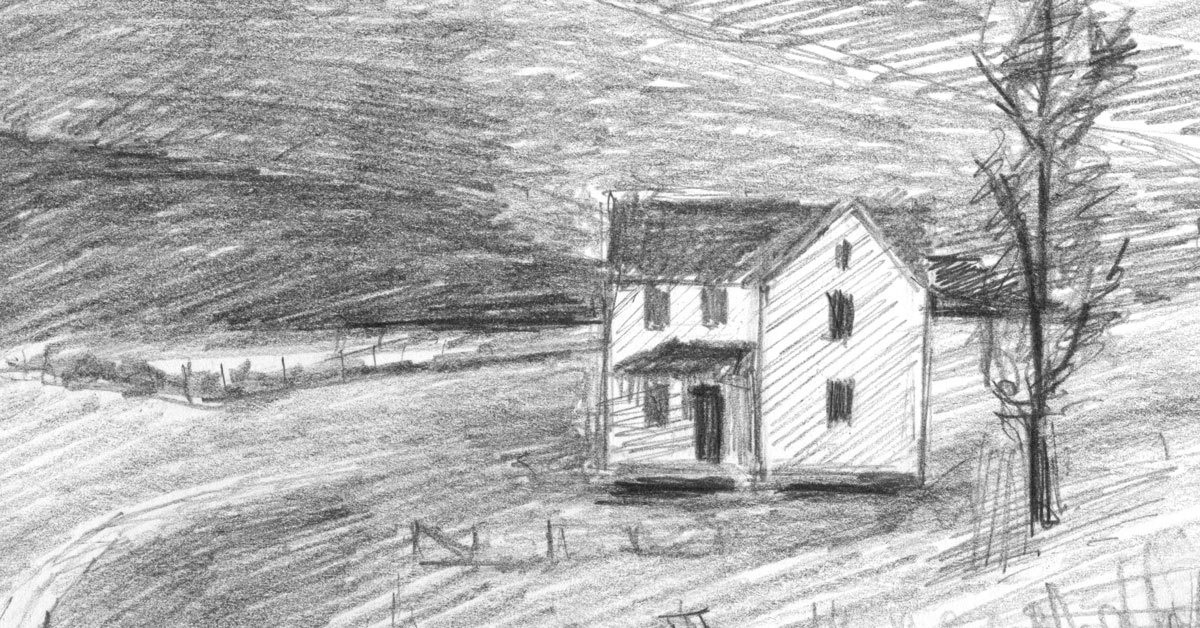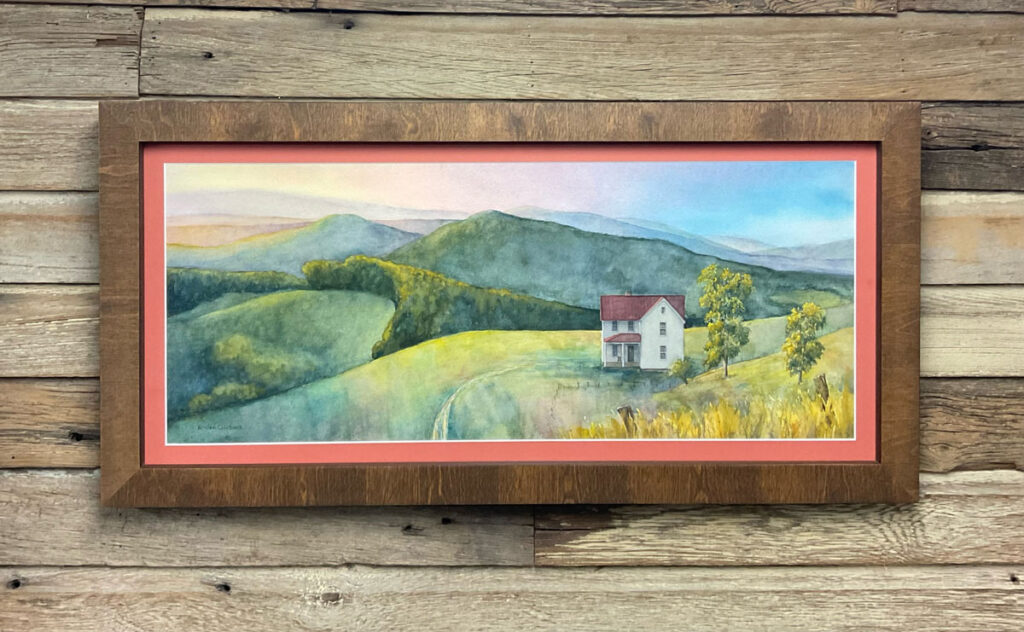
I had a painting opportunity this fall that I’ll long remember.
I was at an event over the summer and bumped into a couple whom I have known since I was a child. They had two children who were also in my 4-H club, both a few years younger than me. I also very literally looked up at their house every day.
They lived in a big, red-roofed farmhouse on a hill high above my house. The farmhouse always seemed mysterious because it was a long drive up from the one-lane county road, and it was surrounded by pasture. I could see the house was exposed to blustery winds with little to shelter it. I wondered why a house would have built in such a lonely place.
The couple did not own the house or the land. They rented it from a local farmer. And one day, when their children were teenagers, they were told that one of the farmer’s family members wanted to live in the house, and they had to find a new place to live. This abrupt change led them to build a house on property they had purchased further back in the hollow, along a thickly wooded stream.
When chance put me in contact with the couple this summer, I was selling paintings as a vendor at a festival. And that sparked a conversation about my work, and how things were in the hollow, and that all led to the old house. Winding conversations are like winding roads, and it’s always a bit of a surprise where you come out.
The couple had moved from the high hill to the deep woods many years ago, but that old house was still very much in their memories, and they asked if I might be interested in painting a watercolor of the house for them. I told them that the house was part of my life, even if it was from a distance, and said yes.
The couple sent me photos of the house from many decades before — photos taken in the late 1970s when they had first moved onto the hill.
One photo especially encapsulated my feelings about the house … it showed the narrow dirt lane winding through the pasture with the house above. A woman was walking up the road to the house. Beyond the house was distant sky. It looked like the house was thrown up against the edge of the world — Stalwart / Silent / Strong. That’s how I always felt when looking up at the farmhouse from our hillside.
However, I knew that I could not let my feelings get in the way of how the couple saw the house and landscape. They had lived it, knew it, and felt it from close in, not far away. So during some of our preliminary conversations, I learned that the spacious view from the house was a critical part of the project. I asked them if they could describe their feelings about the house, the view from the house, and house in the context of the setting, using three words for each.
These are the word sets they sent:
- Rustic / Vulnerable / Utilitarian
- Uplifting / Romantic / Breathtaking
- Respite / Peaceful / Content
The color palette and light in the painting needed to reflect their feelings. Where I might learn into hard edges and strong contrasts, they needed space, and light, and warmth.
I took a deep breath, and I painted the scene as a wide horizontal because those dimensions would help project feelings of restfulness and peace. That picture space also allowed for the surrounding hills and distant mountain to envelope the pasture and the house. As for the lighting, I imagined it as an early summer morning.

Now that the painting is finished, I hope that they feel their words when they look at the painting.
Thanks to my friends and neighbors, I had the chance to paint a part of my childhood and a part of a landscape that is woven into my soul. The place where I am from is rural, poor, and exploited, but it is also stunning and beautiful.
Thank you, D and R!
